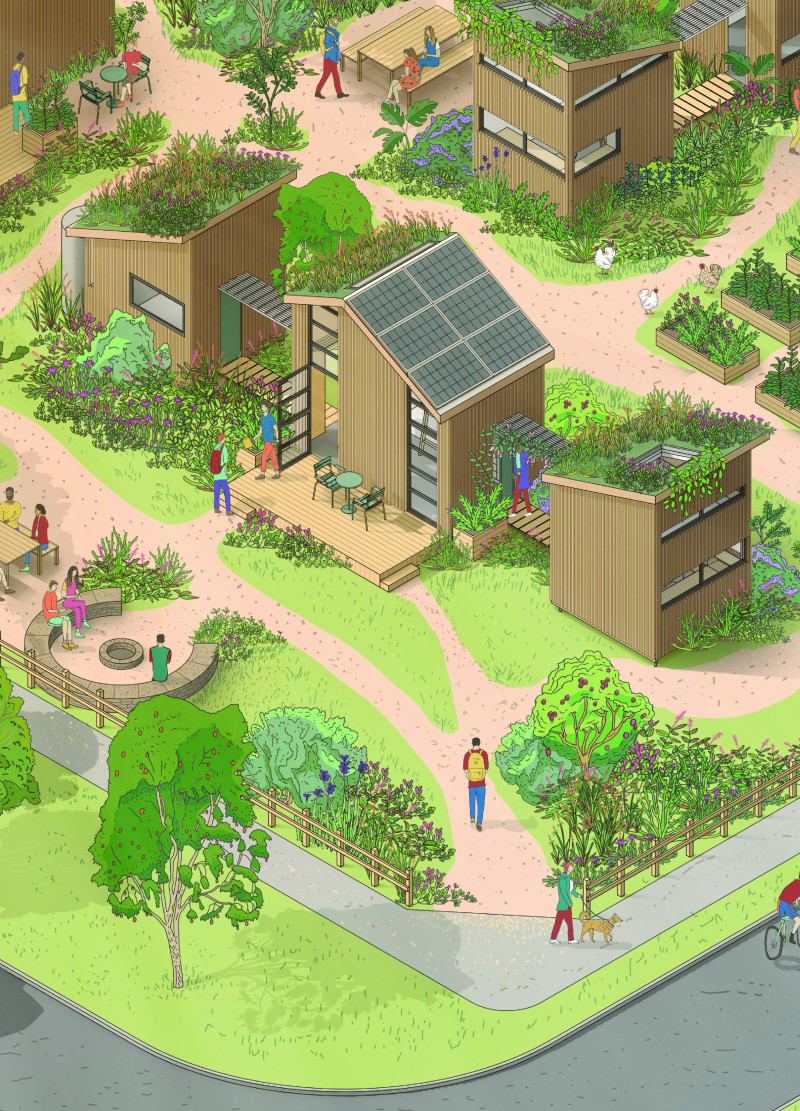5 key facts about this project
Turning Tiny is an architectural response to the challenges of modern micro living in a compact urban environment. Located in Bendigo, Victoria, it offers a unique solution that focuses on community interaction and ecological sustainability. The design aims to provide flexible, convertible living spaces that take advantage of the available urban area, promoting a lifestyle that values shared experiences and environmental responsibility.
Modular Design and Zoning
The layout features three distinct zones: wash, live, and rest. Each area serves a purpose, ensuring that space is used effectively while allowing for easy movement between them. This modular design ensures that the micro homes can be adapted for various needs. They can be expanded or transported as required. This adaptability leads to functional units that meet the demands of urban life.
Innovative Rotatable Core
A key aspect of the design is the rotatable core that houses the main living area. This feature allows the living space to pivot, adjusting its position throughout the year. In winter, it can be oriented to capture maximum sunlight, providing warmth and reducing energy use. Conversely, during summer, the design minimizes heat absorption. This flexibility helps manage temperature effectively, contributing to the comfort of the occupants.
Integration with Landscape
The project incorporates elements of nature to enhance the living experience and promote urban farming. Breezeways serve not only as pathways but also as spaces for kitchen gardens. Residents can grow herbs and vegetables, bringing greenery into their daily lives. Green roofs, which are planted with local wildflowers, provide habitats for pollinators and support biodiversity. This connection to nature enriches the urban environment and encourages community gardening.
Sustainable Practices
Sustainability is a fundamental aspect of the design. Water is managed through systems such as rainwater collection and greywater reuse, reducing dependence on outside sources. The use of hemp insulation improves thermal performance while being an eco-friendly choice. These sustainable features reflect a commitment to reducing the environmental impact of living spaces while promoting resource efficiency.
The result is a living environment that balances urban needs with natural elements. Residents benefit from a comfortable home that encourages community interaction and supports local ecology. The design redefines modern living by integrating sustainable practices into a compact urban framework, providing a practical, community-oriented lifestyle.



















































